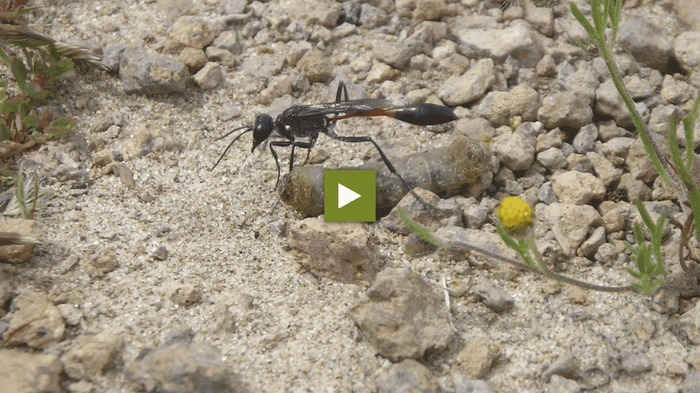Quinoa is a high demanded product, but caterpillars make the planting more difficult. Wasps can help to destroy caterpillars and therefore help to have a successful harvest.
Many farmers in Bolivia have started to grow big fields of quinoa for the first time, because quinoa is a popular and demanded product. But since the vegetation was once destroyed, caterpillars that are eating the leaves and grains of quinoa have become a serious problem.
The burrowing wasp
Some big wasps hunt for caterpillars. The burrowing wasp appears in spring and sommer. It feeds from nectar of flowers and wild flowers like bushes or grasses. Their nests are 3 to 7 cm deep in the soil. The wasps have to feed their offspring with caterpillars.
The wasp stitches in the caterpillar and gives it a liquid which puts the caterpillar asleep. Then it brings the caterpillar to its nest. In the nests it lays down one egg on the body of the caterpillar. Then the wasp closes the nest with sand, so that no other insect gets in.
In the inner of the nest, a little grub hatches and eats the caterpillar. Then the grub builds a cocoon and has a winter sleep.
In spring and sommer more and more wasps are getting out of their cocoons and start the circle of live again. Therfore, caterpillars are always hunted, which protects the quinoa, because caterpillars are the pest of the quinoa.
Beneficial insects
Protect wasps and other good insects instead of using insecticides. The wasp needs flowers, before it lays down eggs, to drink the nectar. Therefore, you should plant native plants in live barriers to give them a good source to eat and shelter. At the same time you protect the soil from wind and erosion.



















